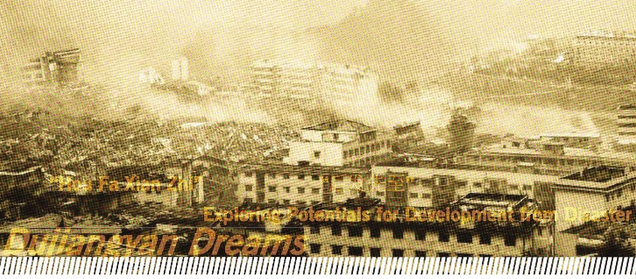
In the summer of 2010, in conjunction with various universities, a 3-week field workshop has been set up to research various redevelopment potentialities in the city of Dujiangyan in the Sichuan Province. Coming in 2 years after the initial disaster, an interdisciplinary group of students and researcher will apply insights gathered from the first UE analysis in order to support the ongoing redevelopment process. A ‘development from disaster’ approach is being used wherein opportunities for the short, middle and long term will be synergized.
As the Dujiangyan area is most notable for its 2000-year-old irrigation system, this Unesco World Heritage site has undergone severe ramifications. Not only are large structural consequences to be found, but also social, economical and spatial transformations are undoubtedly expected to follow. While more then 70% of the inhabitants are currently dependent on an agricultural livelihood (making up only 35% of the total area income), the available land is radically shrinking as a rapid urbanization process has commenced. New high-end tourist economies are moving to find develop opportunities as farmers desperately seek to find a place in the new urban setting. The reallocation of human settlements and land administration within the future development vision plan for the city are being challenged. Simultaneously, new materials and buildings techniques are required to sustain the impact of future hazards, and risk assessments are required to safeguard the current investments. With approximately 800 million farmers, the urbanization process of China is still heavily underway. As the shift from a rural to urban life takes place, the redevelopment of Dujiangyan and the Sichuan province are a unique opportunity to find sustainable ways to synergize social, economical and spatial forces within its geo-political framework. Both the built fabric as well as the immaterial substance of the region and its people must be acknowledged if a prosperous future is to be realized. Through a joint effort between foreign and local universities, learning experiences and insights can be shared generating strategies and visions on multiple scales of space (from local to regional to global) and time (short, middle and long term). The case study of Dujiangyan may prove to be an example for other cities as they too struggle to find optimal solutions balancing economic growth with social prosperity.